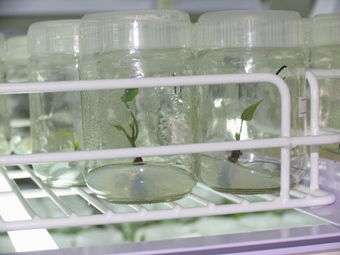Potato (Solanum tuberosum) and sweetpotato (Ipomoea batatas) are the 4th and 7th most important crop plants globally. Both are important subsistence crops in East Africa and complement each other since their growth requirements differ. Potato and sweetpotato are vegetatively propagated, making them prone to accumulation of viruses during cultivation, and ca. 40 and 30 viruses have been reported to infect them, respectively. In East Africa, viruses comprise the only significant disease agents in sweetpotato. It is promising for indexing of the stock plants used for further propagation of planting material.
Potato yields in sub-Saharan Africa are very low with 6-10 tha-1. Potato yields of small-scale farmers in the region fall far short of their potential due mostly to a potent combination of inadequate supplies of high-quality seed and smallholders’ limited awareness of better seed management practices. Currently the formal seed system supply is typically less than 1% of the respective country’s demand and on-farm management of seed borne diseases is rarely implemented by small-scale farmers as knowledge of seed borne diseases is generally poor. Viruses and other seed borne diseases can cause severe seed degeneration leading to decrease in yield, quality and economic losses. Viral infections in particular, PVY and PLRV, and bacterial wilt (Ralstoniasolanacearum) are the main diseases affecting seed quality in the region. To increase the availability of high grade potato tuber seed, there is a high demand of developing components of an innovative seed strategy. The seed strategy envisages producing large numbers of minitubers through one generation of a very rapid multiplication technology, with technologies like in-vitro multiplication and minituber production using aeroponics, thus allowing bulking of sufficient seed in only 2 field generations rather than the conventional 4 to 6 generations. This reduces both the cost of production and prevents the buildup of damaging diseases in the field. Currently, we have brought three adaptive potato varieties namely Belete, Gudena and Jelane, and Beletch for the case of Sweet potato, to attain the aforementioned objectives.


